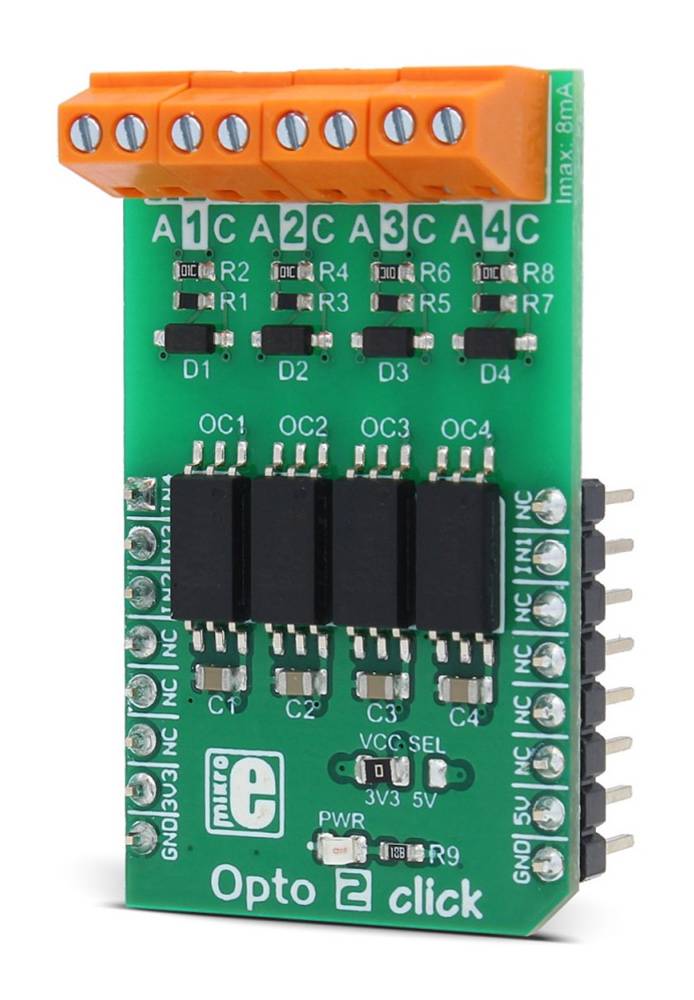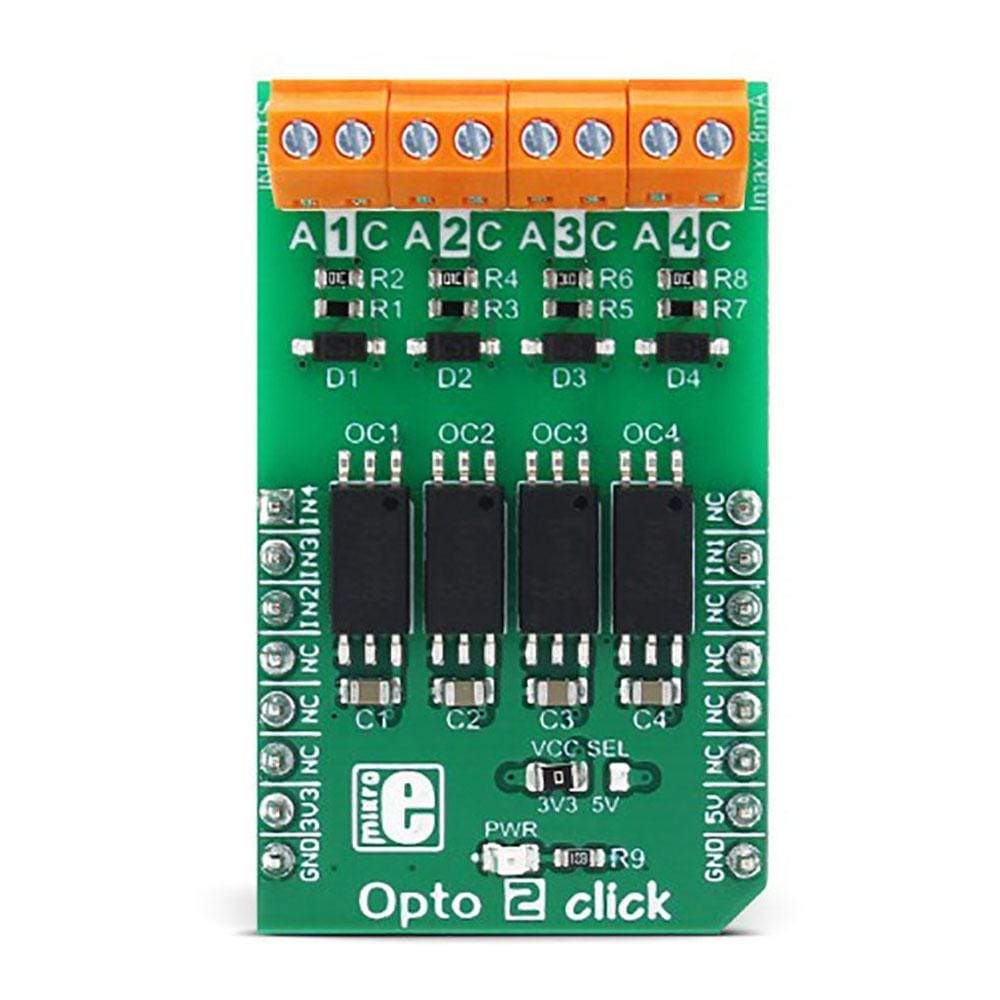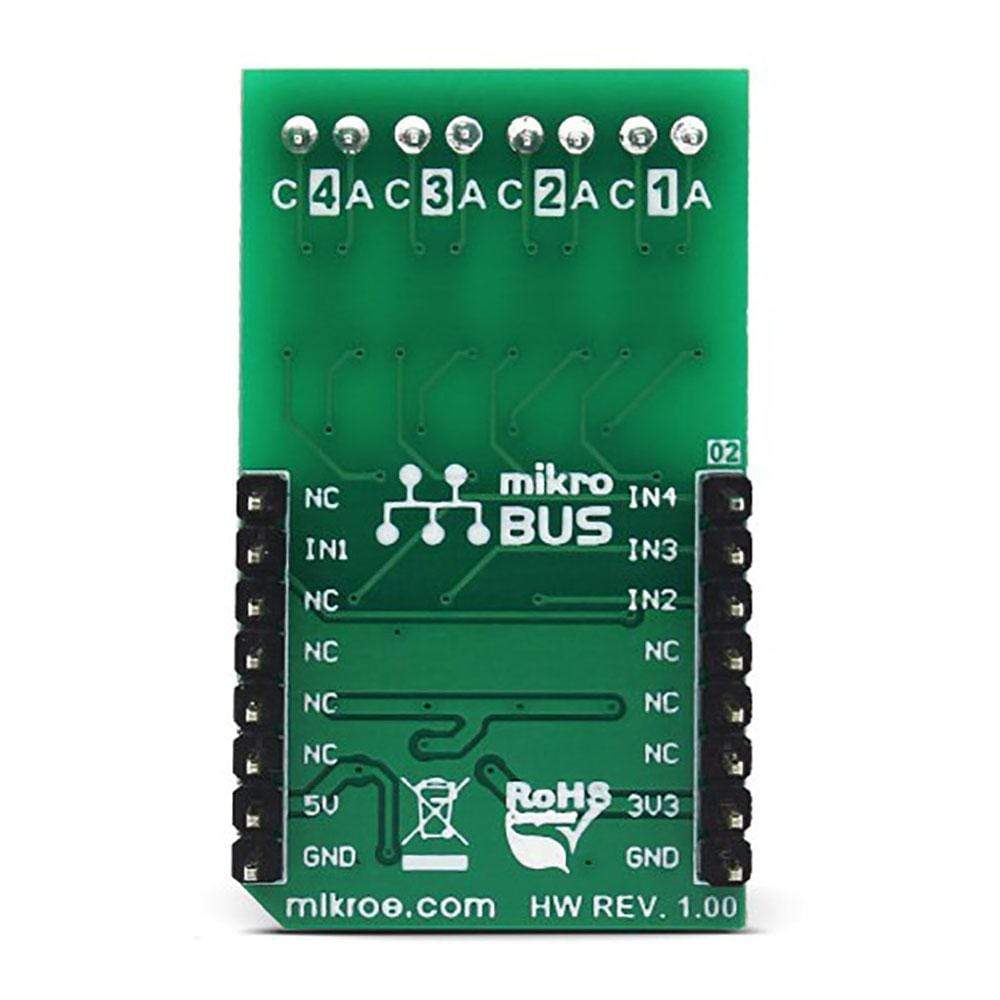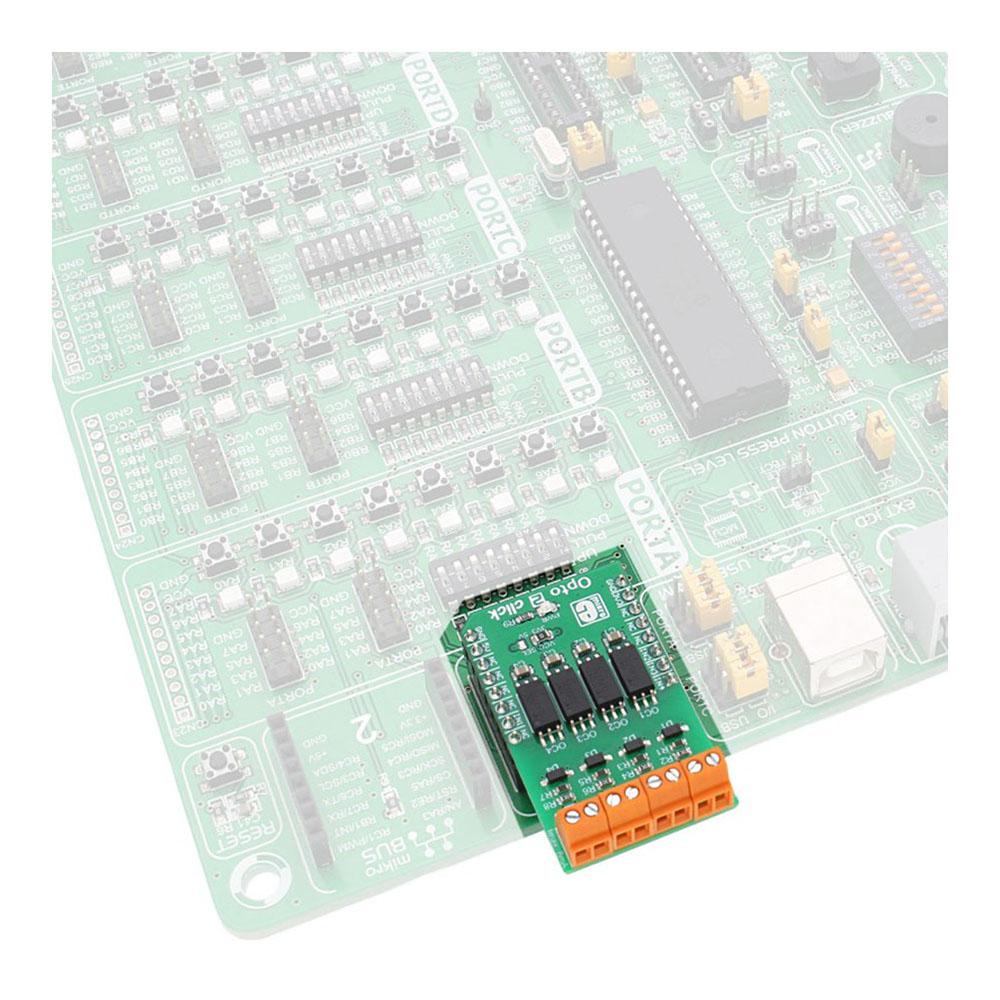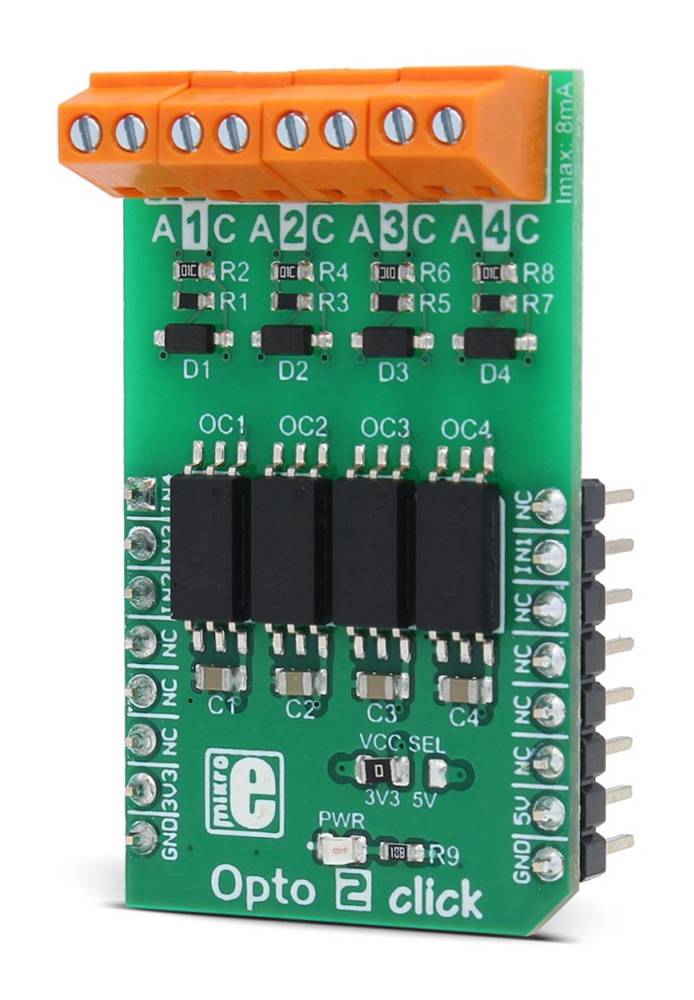
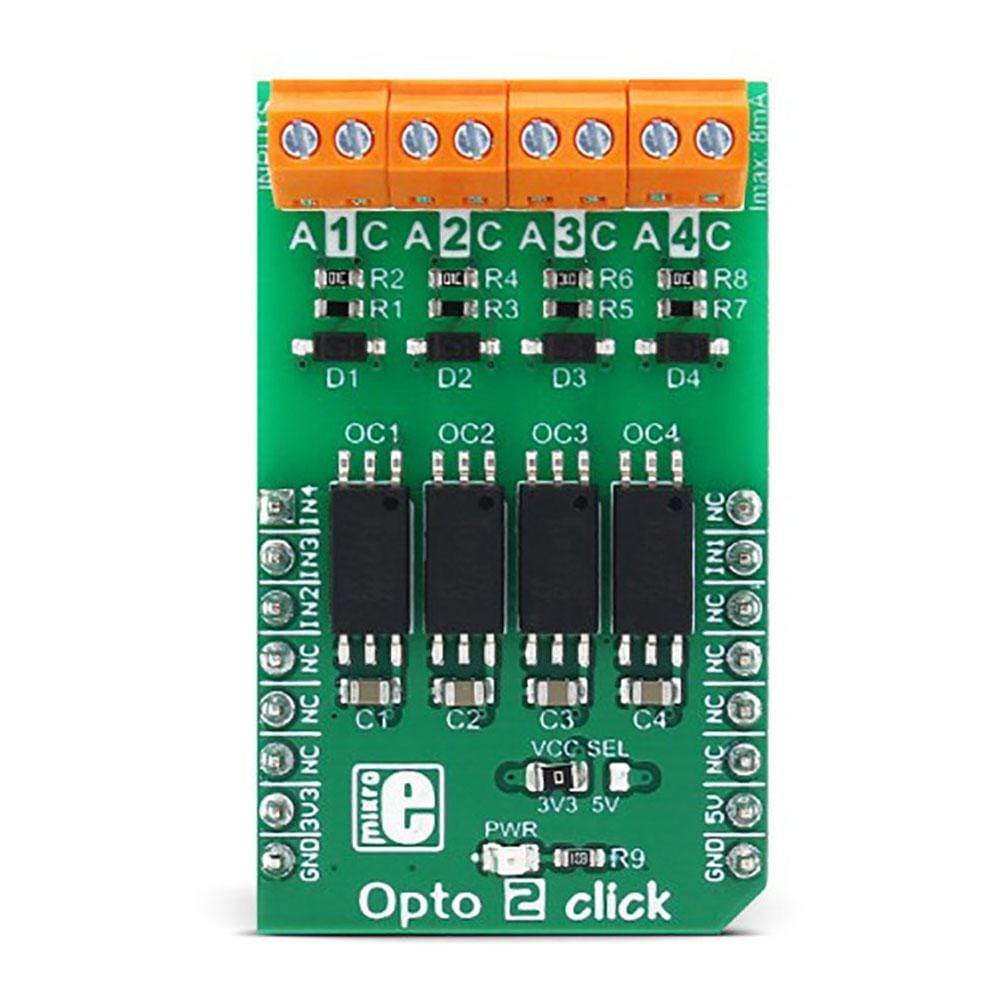
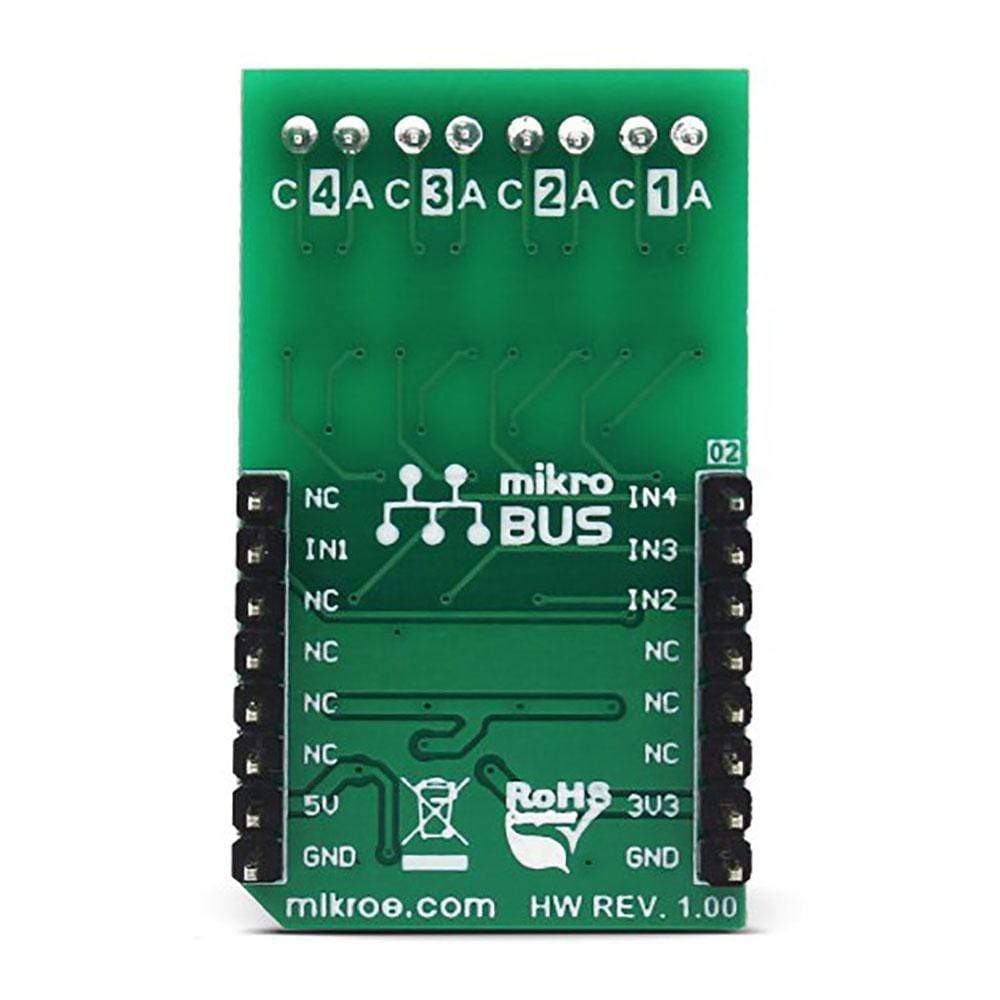

Overview
The Opto 2 Click Board™ is an optical isolator used to provide optical galvanic isolation of sensitive lines. The used optoisolation elements require a very low input current to be driven, down to 1.3mA (min). The speed of the internal optocoupler elements of the Opto 2 Click Board™ allows it to work with the signals up to 20MHz.
The Opto 2 Click Board™ can be used to provide galvanic isolation of the MCU pins, allowing driving by external components, while protecting it from surges up to 5kV on the driver side.
Downloads
Das Opto 2 Click Board™ ist ein optischer Isolator, der zur optischen galvanischen Trennung empfindlicher Leitungen verwendet wird. Die verwendeten Optoisolationselemente erfordern einen sehr niedrigen Eingangsstrom von bis zu 1,3 mA (min.). Die Geschwindigkeit der internen Optokopplerelemente des Opto 2 Click Board™ ermöglicht den Betrieb mit Signalen bis zu 20 MHz.
Mit dem Opto 2 Click Board™ lässt sich eine galvanische Trennung der MCU-Pins erreichen, was die Ansteuerung durch externe Komponenten ermöglicht und gleichzeitig auf der Treiberseite vor Spannungsspitzen von bis zu 5 kV schützt.
| General Information | |
|---|---|
Part Number (SKU) |
MIKROE-3015
|
Manufacturer |
|
| Physical and Mechanical | |
Weight |
0.022 kg
|
| Other | |
Country of Origin |
|
HS Code Customs Tariff code
|
|
EAN |
8606018712946
|
Warranty |
|
Frequently Asked Questions
Have a Question?
Be the first to ask a question about this.

